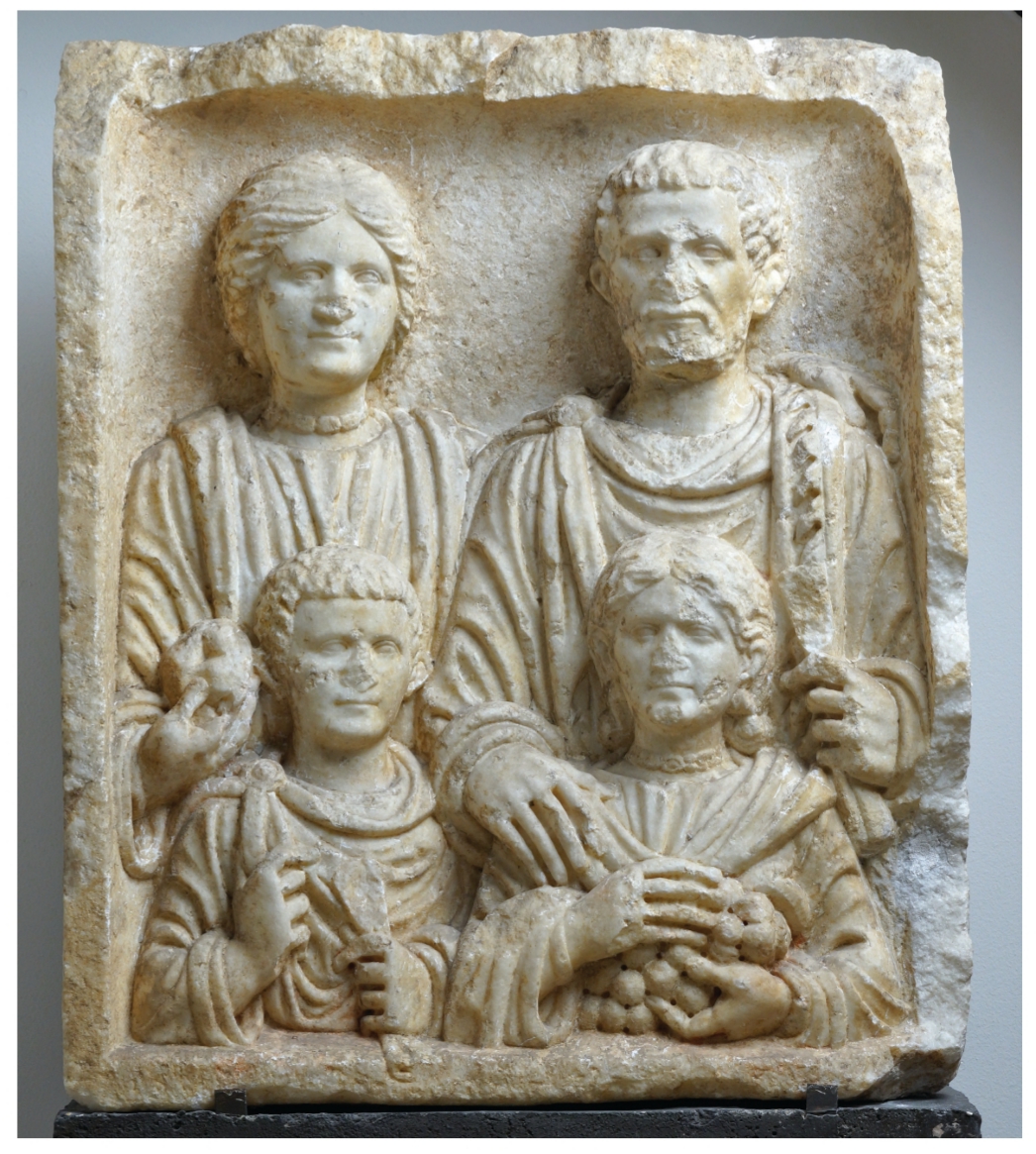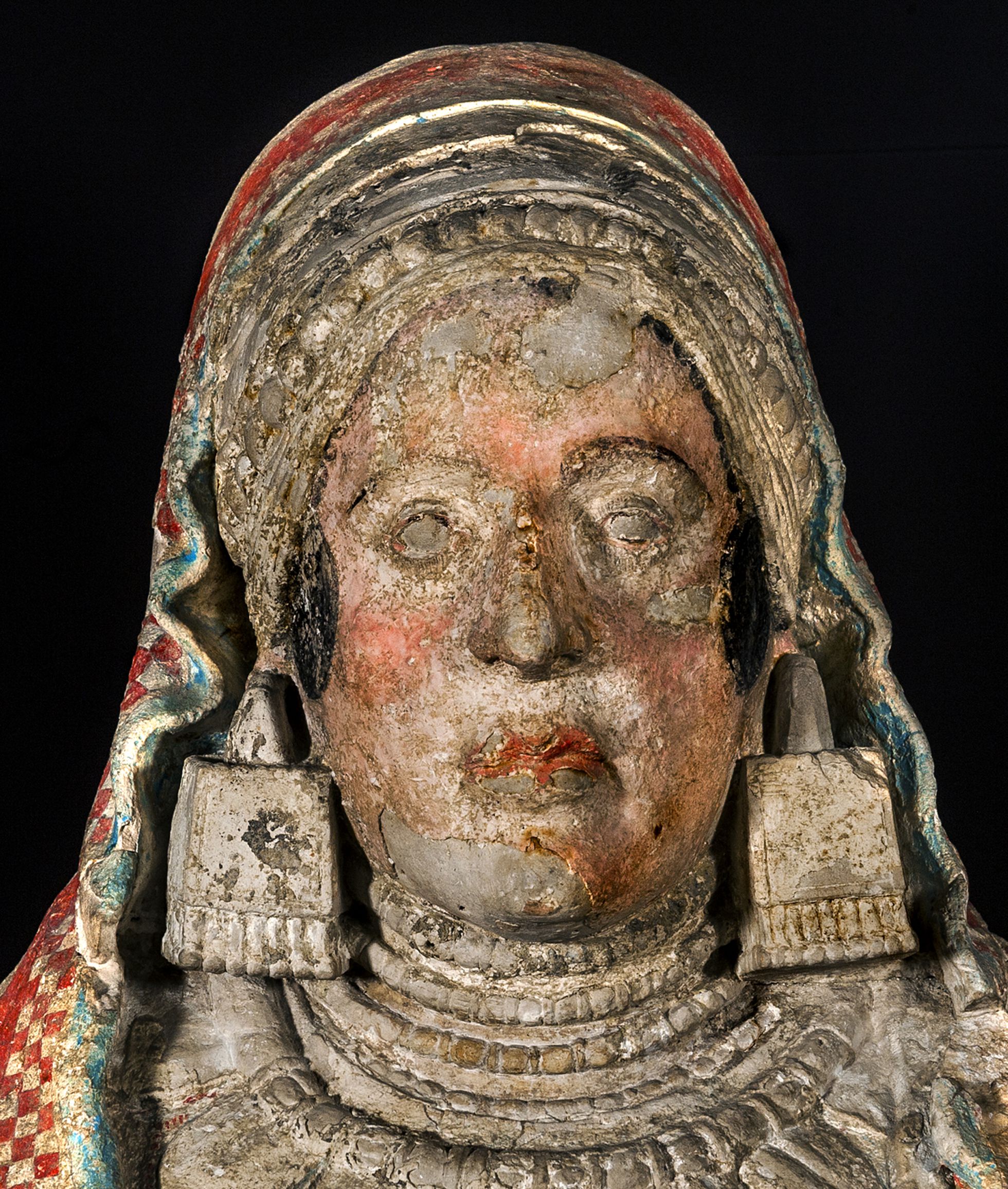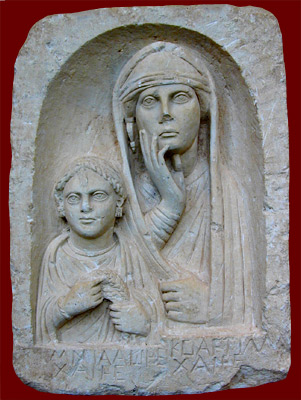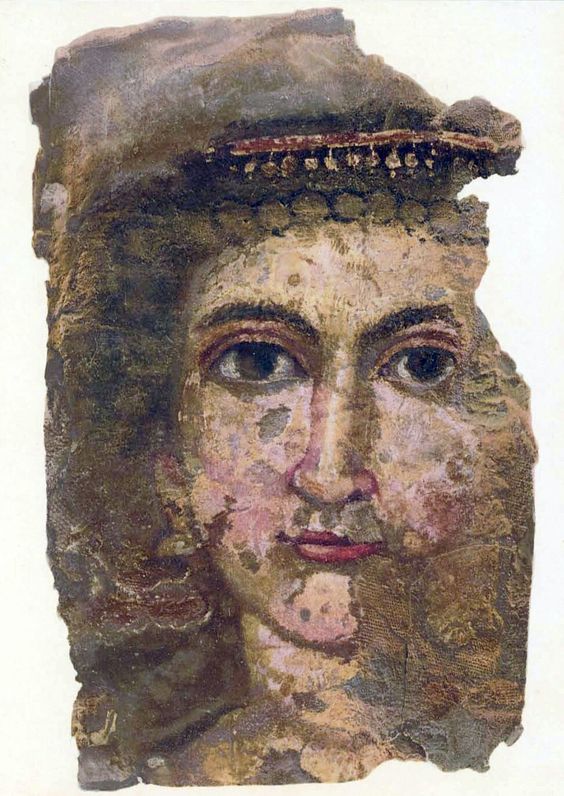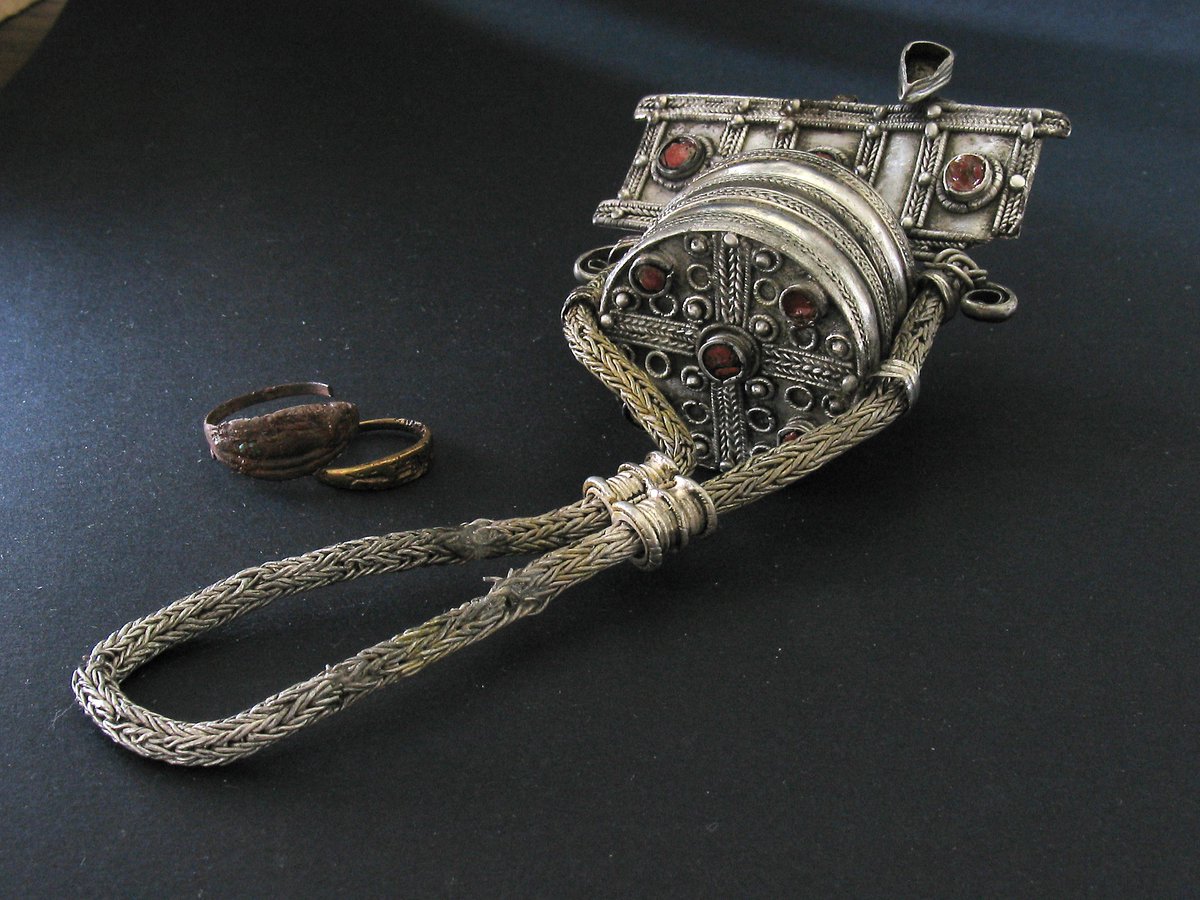“A high infant mortality rate in Roman Egypt encouraged confidence in magical spells to ward off illness and injury. For this reason the boy wears a small round container for amulets on a plain black necklace, possibly made from leather. His head has been almost completely shaved to feature a single lock at the back (with golden clip) and two small tufts on his brow. This pattern is in accordance with the practices of devotees of the goddess Isis, whose son the god-child Horus was the model for this hair treatment.” >> The Getty Museum



Children from 2nd-3rd century Egypt shown on the Fayum portraits wearing a horizontal cases, small containers with the amulets inside.
Portrait of a girl from the Museum of Fine Art, Houston, TR‐184‐2013 >> https://ceramics.onlinelibrary.wiley.com
Portrait of a boy >> The Getty Museum Unknown Mummy Portrait of a Youth, 150–200, Encaustic on linden wood 20.3 × 13 cm, Inv. no. 78.AP.262
For explanation of the boy’s hairstyle see:
- Barbering the Beardless: A Possible Explanation for the Tufted Hairstyle Depicted in the ‘Fayum’ Portrait of a Young Boy, Salima Ikram. Journal of Egyptian Archaeology 89: 247-251. academia.edu
Portrait of a boy from the National Museum in Warsaw Warsaw 2nd century.



Greek amulet container from the Hermitage 3rd century BCE.
The left side here could be opened and an amulet was put inside, e.g. a protective inscription.
Roman amulet case from British Museum 2nd-3rd century.
Amulet from State museums in Berlin from the 2nd-3rd century Egypt. The chased decoration shows two snakes in crowns, which may be a reference to the figures of Isis and Serapis. An amphora between snakes, birds and fish around.
The underside is decorated with a geometric surface pattern; the reverse bears a mirror-image Greek inscription with a protective formula. An amulet is 3.5 cm long.
Farther reading: Notes on the furniture of children’s tombs in Greco-Roman Egypt: associated furniture and furniture depicted
Marie-Dominique Nenna

“In the Egypt of the Roman Empire, historians estimate that half of children would die before the age of 10. The child painted here appears to be around five years old and wears a necklace emblazoned with amulets, which were believed to protect against the evil eye.” source

In the Detroit Institute of Arts Inv. no. 25.2
Jewelry: big earrings with pearls, lunula shaped top part. Big medallion on very thick chain / torc.
Photo from the website >> https://www.mundogump.com


Pendant with a coin of Gordian III; gold, 242 CE (medallion), 250-300 CE (setting & chain), Egypt
George Ortiz Collection

The Ontario Museum

Photo source https://public.fotki.com/Vakin


Photo by DEA / A. DAGLI ORTI/De Agostini via Getty Images https://www.gettyimages


The Ontario Museum


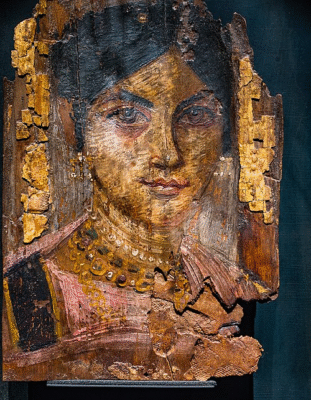
Staatliches Museum Ägyptischer Kunst 2972
Photo ArchaiOptix


the Royal Ontario Museum
Women with the hair pins





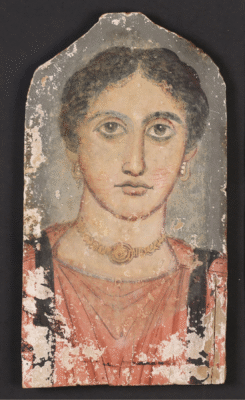
https://www.getty.edu/publications/mummyportraits/part-two/14/


